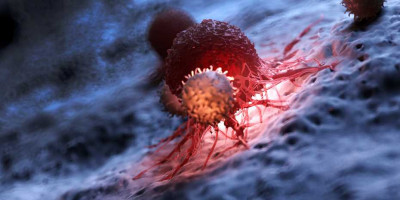
The mitochondrial enzyme dihydroorotate dehydrogenase (DHODH) plays an important and previously unknown role in blocking a form of cell death called ferroptosis, according to a new study published in Nature by researchers at The University of Texas MD Anderson Cancer Center.
Preclinical findings suggest that targeting DHODH can restore ferroptosis-driven cell death, pointing to new therapeutic strategies that may be used to induce ferroptosis and inhibit tumour growth.
"By understanding ferroptosis and how cells defend against it, we can develop therapeutic strategies to block those defence mechanisms and trigger cell death," said senior author Boyi Gan, Ph.D., associate professor of Experimental Radiation Oncology.
"We have discovered that DHODH plays a key role in defending against ferroptosis and shown that we can exploit this vulnerability with clinically tested therapies."
Ferroptosis is a recently identified form of controlled cell death triggered by the toxic accumulation of lipid peroxides in the cell. Because lipid peroxides are generated through normal metabolic activities, cells also have mechanisms in place to defend against ferroptosis.
Glutathione peroxidase 4 (GPX4) is one of the key defence mechanisms identified to date.
In this study, the researchers used GPX4 inhibitors to block its activity and to identify new defence mechanisms. Metabolic analyses pointed them to DHODH, a mitochondrial enzyme that normally is involved in the pyrimidine biosynthesis pathway.
In cells with low GPX4 expression, loss of DHODH activity led to the accumulation of lipid peroxides in mitochondria and the activation of ferroptosis.
By contrast, cells with high GPX4 expression were able to continue blocking ferroptosis activity in the absence of DHODH. The findings suggest that DHODH and GPX4 work as redundant defense mechanisms in the mitochondria to prevent ferroptosis.
The researchers further clarified DHODH's role in regulating ferroptosis and then investigated the therapeutic potential of targeting this enzyme in cancer cells. Using extensive preclinical models, they evaluated the DHODH inhibitor brequinar, which has been tested in multiple clinical trials for other indications.
In GPX4-low cancers, brequinar effectively induced ferroptosis and suppressed tumour growth, but the effects were not seen in GPX4-high cancers. However, the combination of brequinar and sulfasalazine, an FDA-approved ferroptosis inducer, resulted in a synergistic effect to overcome high GPX4 expression and to block tumour growth.
"We were able to leverage our understanding of a new ferroptosis defense mechanism into a novel therapeutic strategy that appears promising in preclinical studies," Gan said.
"Because ferroptosis is active across cancer types, we believe this could have broad implications, particularly in cancers with low expression of GPX4."
We are an independent charity and are not backed by a large company or society. We raise every penny ourselves to improve the standards of cancer care through education. You can help us continue our work to address inequalities in cancer care by making a donation.
Any donation, however small, contributes directly towards the costs of creating and sharing free oncology education.
Together we can get better outcomes for patients by tackling global inequalities in access to the results of cancer research.
Thank you for your support.